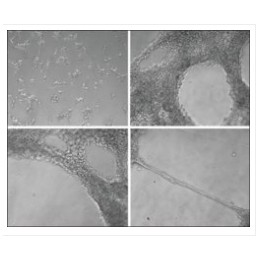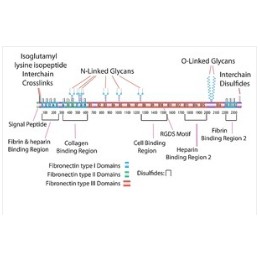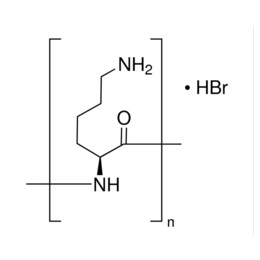
Vitronectin from human plasma, solution, suitable for cell culture
Vitronectin is a 75 kDa glycoprotein produced by hepatocytes and liberated into the blood. It has four domains and at least two structural motifs.[1] Vitronectin gene is small with three kilobases in length and has eight exons. It is also present on fibers in the extracellular matrices of several tissues.[2]
Vitronectin is a monomeric glycoprotein used to promote cell attachment, migration, proliferation and differentiation in a broad number of cell lines and types. This product has been purified from human plasma where it is found as a mixture of 75kDa and
65kDa polypeptides.
Vitronectin’s primary use in cell culture is related to cell adhesion. It also binds to heparin and collagen.
Vitronectin is ideal for coating of surfaces. The optimal concentration for cell attachment and culture
may differ for various cell types. Vitronectin has been used at a final coating concentration as low as 50 ng/cm2 on plasticware. It is provided in user-friendly packaging for use and storage. Vitronectin is sterile filtered and is supplied
as a ready to use solution after thawing and concentration adjustment.
Vitronectin controls proteolysis. It helps in in vitro cell adhesion.Vitronectin is involved in the modulation of perforin mediated killing by cytotoxic T-lymphocytes and natural killer (NK) cells. It controls the inflammatory reactions in blood.[1]
This product is supplied in a solution of 0.15 M NaCl and 0.005M HEPES at pH 7.4




